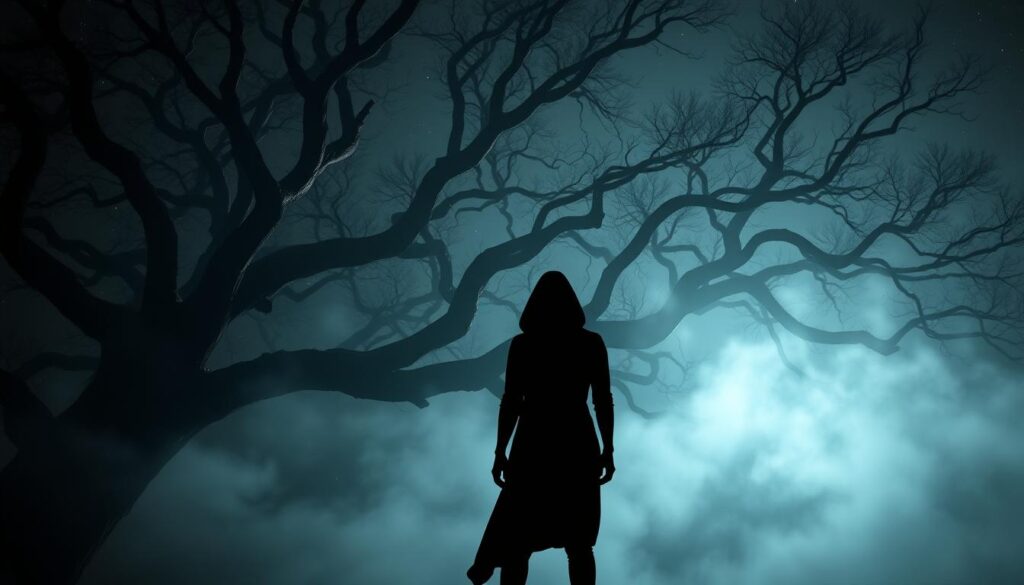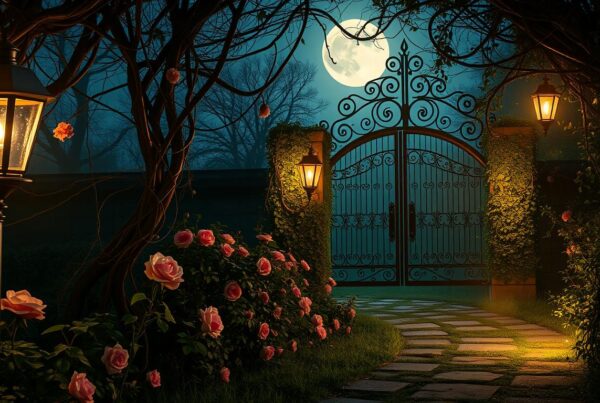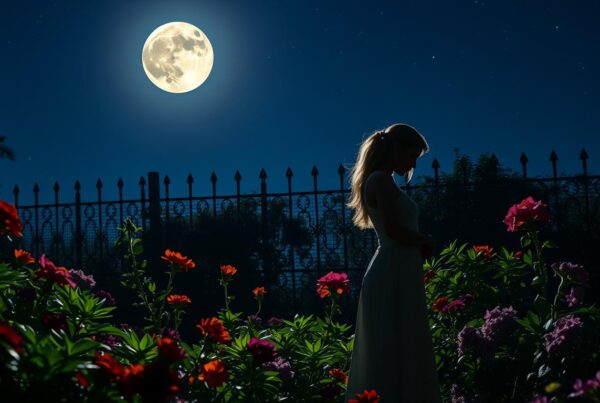Humans have always been drawn to unattainable love. Forbidden relationships mix human psychology, romantic desire, and fascination. They pull us towards things or people we can’t have.
This pull comes from many places. It could be because of social rules, our own life situations, or inner struggles. It makes us want what we can’t have even more.
Exploring forbidden attraction helps us understand why we’re drawn to it. By looking into these patterns, we learn more about our desires and feelings.
The Concept of Forbidden Attraction
Forbidden attraction has always fascinated people, across many generations and cultures. It comes from a deep psychological pull towards things society says we can’t have. This pull makes us want these things even more.
This idea is tied to both our society’s rules and our own minds. It creates a story that spans history and literature.
Understanding the Basics
Forbidden attraction is about wanting something we can’t have. Studies show it’s driven by the thrill of breaking rules and the excitement of secrets. It’s also because we naturally want what’s hard to get.
The allure of forbidden love grows because it’s rare and special. This can make us ignore our common sense.
Historical Context
Forbidden attraction has been shown in many stories and art. The story of Tristan and Isolde shows the beauty and sadness of forbidden love. Shakespeare’s “Romeo and Juliet” also talks about these boundaries and the risks people take for love.
These stories show that forbidden attraction has always been a big part of our lives. They reflect the rules and taboos of their times.
The Allure of the Unattainable
For centuries, humans have been fascinated by what we can’t have. This section looks into why we find the unattainable so appealing. We’ll see how our minds make the unattainable seem more valuable and why we’re drawn to it.
Psychological Theories
Freud and Jung said our desire for the unattainable comes from deep within us. Freud believed it’s because of a childhood wish we can’t fulfill. Jung thought it’s because the unattainable represents parts of ourselves we haven’t explored.
Perceived Value
Sociologists say the unattainable is more appealing because it’s rare. Social psychology agrees, saying we value things more if they’re hard to get. This makes us want what’s just out of our reach, keeping the allure of forbidden love alive.
Biological Factors at Play
Exploring why we’re drawn to forbidden attraction shows the importance of biological factors. Dopamine levels play a big role. This hormone is linked to pleasure and reward in our brains. High dopamine levels make us feel excited about chasing what we can’t have.
Evolutionary psychology also sheds light on this. Mate selection has always been tough and competitive. The thrill of the unattainable is like a strategy to find the best traits and genes. This helps ensure our lineage thrives.

Our bodies react in exciting ways when we see someone we can’t have. A mix of chemicals is released, making us feel more attracted. These reactions are what make forbidden love so intense.
Attraction science helps us understand these feelings. It shows that the challenge of forbidden love makes us more interested. Evolutionary psychology, mate selection, and biochemical reactions all play a part in why we’re drawn to the unattainable.
Fear and Desire: A Complex Relationship
Fear and desire mix in a way that grabs our attention. This mix can lead to deep emotional bonds. Fear can make us notice others more, changing how we see them.
The Role of Fear
Fear makes us more alert and aware of our surroundings. It’s like an adrenaline rush, making moments more intense and unforgettable.
How Fear Amplifies Attraction
When fear meets romantic feelings, it creates a strong attraction. This is seen in forbidden love or dangerous situations. Fear makes our bodies release adrenaline, mixing fear and attraction.
Studies show that taking risks and facing stress can make attraction stronger. This mix of fear and desire is common in movies and books. It shows how fear and desire can come together in real life.
The Role of Social and Cultural Norms
Social and cultural norms shape how we see and deal with relationships that go against what society expects. These norms are key in how we react to taboo relationships and forbidden affairs. They help set moral boundaries in communities, making some romantic connections seem wrong or unwanted.
Social Pressures
Social pressures tell us how to act in relationships that don’t fit the norm. Society’s expectations push us to follow the rules, avoiding relationships that might get us judged or shunned. This makes it hard for people to think about forbidden affairs.
Cultural Taboos
Cultural taboos affect what’s okay in romantic relationships. In different places, some relationships are seen as taboo because of history or deep moral beliefs. These stories shape how we see love, making some connections seem off-limits. This complex mix of norms and taboos stops many from exploring relationships outside of what’s expected.
Mystery and Intrigue: The Enigmatic Attraction
The mystery of romance has always drawn us in. This secrecy makes relationships more exciting. Studies show it’s a deep human need for the unknown.

The Appeal of Mystery
Why do we find mystery so appealing? Our brains love the thrill of the unknown. It makes people seem more interesting and attractive.
This desire for mystery leads us to seek out those who are mysterious. They are often those with secrets and hidden lives.
Case Studies and Real-life Examples
Studies show how mystery in romance grabs our attention. Humphrey Bogart and Lauren Bacall’s secret love is a great example. Their hidden romance made their famous bond even more special.
Jay Gatsby’s mystery in “The Great Gatsby” also shows its power. His enigma drew people in and kept them interested.
Many people are drawn to those who seem mysterious. This makes their stories endlessly fascinating. Their secrets keep us guessing and wanting more.
The Forbidden Fruit Theory
The Forbidden Fruit Theory explores why we’re drawn to forbidden things. It says our curiosity grows when we’re told not to do something. This idea is like the forbidden fruit effect, showing how warnings make things more tempting.
When we’re told we can’t have something, it becomes more appealing. Our curiosity gets the better of us. We want to know why we can’t have it.
Forbidden fruit has been a theme in stories and real life for ages. It’s seen in things we can’t have, from old tales to today’s forbidden items. This theory helps us understand why we’re drawn to what’s off-limits. It shows how our minds work when faced with temptation.
The Role of Media in Shaping Perceptions
Media has a big role in how we see the world and love. Romantic dramas show us forbidden love stories. These stories are common in movies, TV shows, and books.
Portrayal of Forbidden Love Stories
Forbidden love stories grab our attention in romantic dramas. They show couples fighting against society to be together. This really connects with viewers.
Classic films like “Romeo and Juliet” and shows like “Bridgerton” show these themes. They help shape how we see love and relationships.
Impact on Modern Relationships
Media’s take on forbidden love affects our modern relationships. It shapes how we see love and conflict. Studies show that watching these stories can change our views on love and attraction.
Media helps shape what we think is forbidden or irresistible in love. It plays a big part in how we see relationships.
Real-life Stories of Forbidden Love
Exploring forbidden love through history gives us valuable lessons. These stories have captivated many, teaching us lessons that still apply today.
Famous Examples
The affair between Cleopatra and Julius Caesar is legendary. Their love changed history, showing the complex nature of forbidden love. Another famous story is the secret romance between Wallis Simpson and Edward VIII. This love led to a king giving up his throne, changing the British monarchy forever.
Lessons Learned
The effects of these relationships were deep, touching both the people involved and their societies. Cleopatra’s alliances with Caesar and Mark Antony caused political chaos and her death. Edward VIII’s decision to leave the throne showed the high costs of forbidden love. Today, we learn the importance of balancing personal wishes with societal rules.



